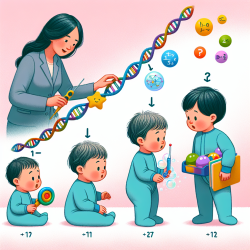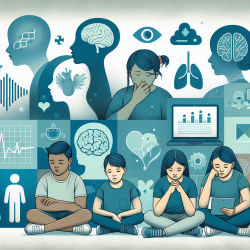In the field of school-based mental health, the use of psychotropic medications is a crucial aspect of managing various mental health concerns in children and adolescents. The research paper titled "State of the Evidence for Use of Psychotropic Medications in School-Age Youth" provides an extensive review of current evidence and guidelines for prescribing these medications. This blog post aims to help practitioners enhance their skills by implementing research outcomes or encouraging further research.
Key Findings from the Research
The research highlights several critical areas:
- Prevalence and Impact: Approximately 20% of U.S. youth have a mental health condition annually, with higher rates among those in poverty. Common disorders include anxiety and ADHD, affecting nearly 10% of youth.
- Access to Care: Despite the availability of evidence-based treatments, half of the children with mental health issues do not receive appropriate care due to various barriers, including limited availability of clinicians and societal stigma.
- Role of Primary Care: With a shortage of child psychiatrists, primary care clinicians are increasingly managing mental health care, although they often lack adequate training in psychotropic medication prescribing.
- Collaborative Care Models: Coordinated, collaborative, and integrated care models have shown promise in supporting primary care clinicians in managing psychotropic medications, emphasizing the need for interdisciplinary collaboration.
Implementing Research Outcomes
Practitioners can improve their skills by adopting the following strategies based on the research findings:
- Enhance Training: Primary care clinicians and school-based practitioners should seek additional training in pediatric psychopharmacology to improve their comfort and competence in prescribing and managing psychotropic medications.
- Promote Collaborative Care: Establishing coordinated care models that involve psychiatric consultations can help primary care providers manage complex cases more effectively.
- Utilize Evidence-Based Guidelines: Adhering to professional practice parameters and treatment guidelines, such as those from the American Academy of Pediatrics (AAP) and the American Academy of Child and Adolescent Psychiatry (AACAP), can ensure that treatment decisions are informed by the latest evidence.
- Monitor and Evaluate: Regular monitoring of medication effects on learning and behavior in school settings is essential. Schools, parents, and medical providers should work together to develop policies and guidelines for effective medication management.
Encouraging Further Research
While the current state of evidence provides valuable insights, there are still areas that require further investigation:
- Long-Term Outcomes: More research is needed to understand the long-term effects of psychotropic medications on children and adolescents.
- Diverse Populations: Studies should focus on underrepresented groups to ensure that findings are generalizable across diverse populations.
- Integration of Psychosocial Interventions: Research should explore the combined effects of psychotropic medications and psychosocial interventions to optimize treatment outcomes.
By staying informed and implementing research-based strategies, practitioners can significantly improve the mental health care provided to school-age youth.
To read the original research paper, please follow this link: State of the Evidence for Use of Psychotropic Medications in School-Age Youth.










